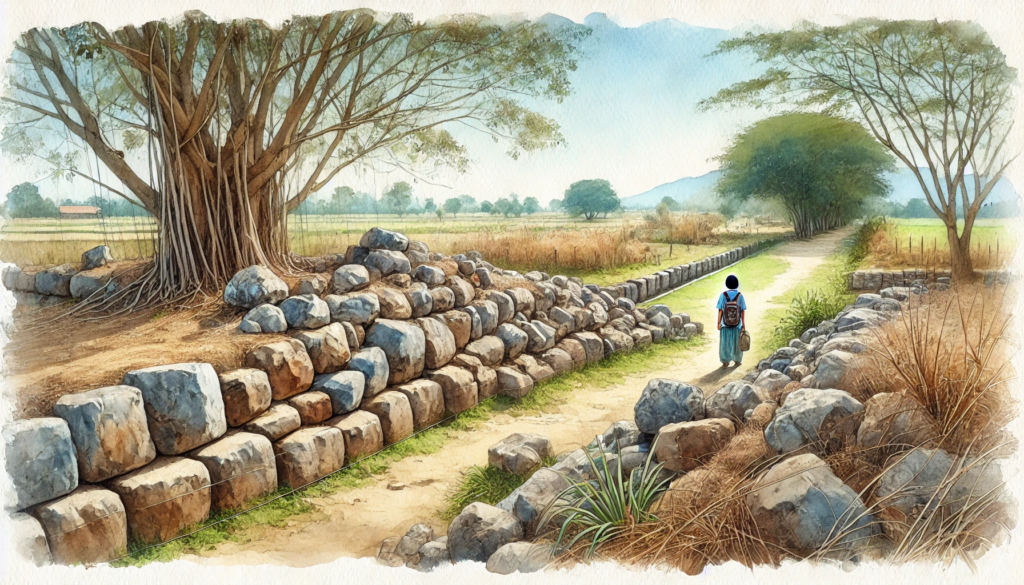ChatGPT:
The underground aqueduct of Athens—often referred to as Hadrian’s Aqueduct—originated during the Roman period when Athens was under the influence of the Roman Empire. Its construction was initiated by Emperor Hadrian (r. 117–138 CE), who was known for his extensive building programs and his admiration for Greek culture. The aqueduct’s primary purpose was to bring a reliable supply of fresh water into the city, supporting both its growing population and the bathing facilities that the Romans deemed essential to urban life.
Early Construction and Design (2nd Century CE):
Hadrian’s Aqueduct was built around the mid-2nd century CE to channel water from springs and natural reservoirs located to the north of Athens, near the slopes of Mount Parnitha. Rather than relying solely on large, visible bridges and arcades—commonly associated with Roman aqueducts—its engineers designed it predominantly as an underground conduit. This subterranean construction offered several advantages: it protected the water from contamination, minimized evaporation, and safeguarded the supply from potential attackers or environmental damage.
To achieve a continuous, gentle gradient that allowed water to flow naturally by gravity, Roman surveyors carefully plotted the aqueduct’s nearly 20-kilometer route beneath the city’s uneven terrain. They excavated tunnels, lined them with stone and Roman concrete, and sealed them with hydraulic mortar to maintain a stable, waterproof environment. At strategic intervals, vertical shafts were installed to provide access for maintenance, cleaning, and inspections.
Use and Maintenance Across Empires:
Once completed, the aqueduct fed into a central reservoir at the foot of Lycabettus Hill, in the area now known as the Dexameni (from the Greek word for “reservoir”). From there, water was distributed via channels and pipes to various parts of the city, supporting public baths, fountains, households, and gardens. The aqueduct remained vital for centuries, weathering changes in political power and shifting urban demographics.
During the centuries following the collapse of Roman authority in the region, Athens passed through Byzantine and later Ottoman governance. The Hadrianic Aqueduct continued to function intermittently throughout these periods. However, warfare, limited maintenance, and infrastructural damage under Ottoman rule led to partial disruptions. While some repairs were made over time, sections of the aqueduct fell into disuse, and the water supply became less reliable.
Decline and Neglect (19th–20th Centuries):
By the late 19th and early 20th centuries, modern water infrastructure began to replace the ancient system. The construction of the Marathon Dam and other large-scale waterworks, coupled with rapid urbanization, rendered the old Roman aqueduct less critical. Its channels, still silently threading beneath neighborhoods, were neglected, with water eventually running unused into sewer systems and, ultimately, out to sea. As the city expanded, many Athenians remained unaware that such a sophisticated and ancient conduit still lay hidden beneath their feet.
Rediscovery and Revival (21st Century):
In recent decades, concerns over climate change, drought, and sustainable resource management have sparked renewed interest in using the aqueduct. Recognizing the historical and practical value of this ancient infrastructure, local authorities, the Athens Water Supply and Sewerage Company (EYDAP), and cultural heritage organizations collaborated to explore ways to revive Hadrian’s Aqueduct. Pilot projects now aim to channel this non-potable but clean groundwater to irrigate green areas, supply washing water for households, and reduce reliance on the city’s treated drinking supply for non-drinking uses.
Through these revival efforts, Hadrian’s Aqueduct is not only being restored as a functional asset but is also serving as a catalyst to foster a more sustainable “water culture” in Athens. The project reconnects the modern metropolis to its Roman engineering heritage, ensuring that an engineering marvel conceived nearly two thousand years ago continues to influence and improve urban life in the 21st century.
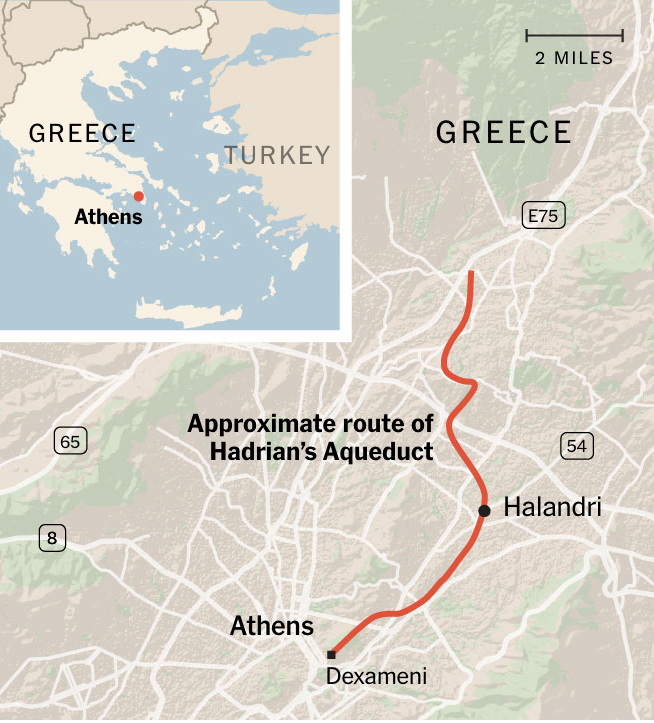
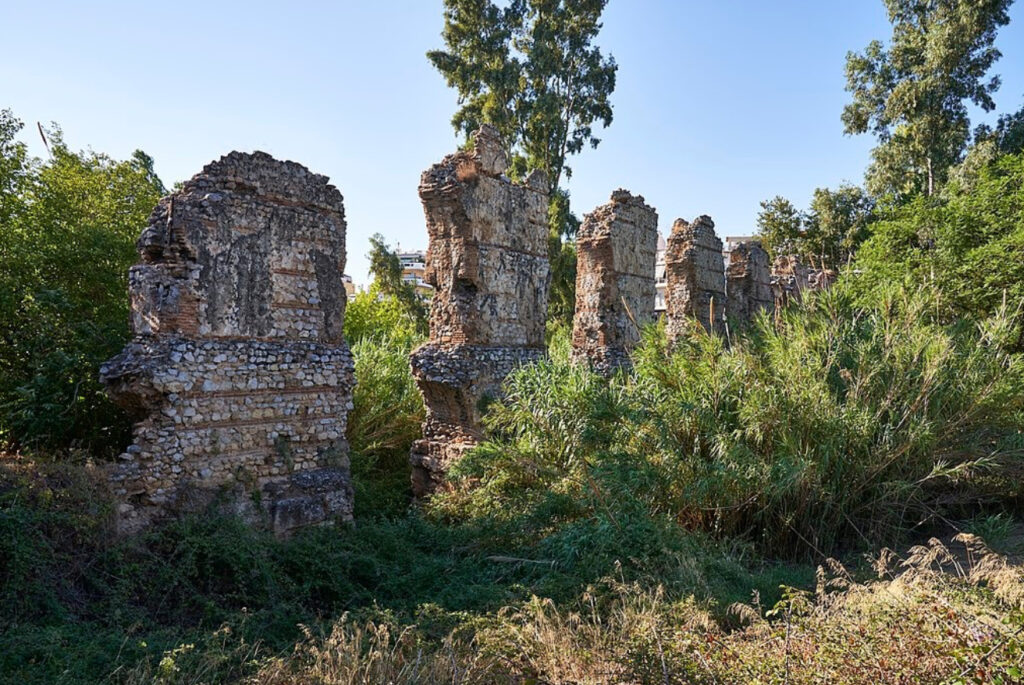
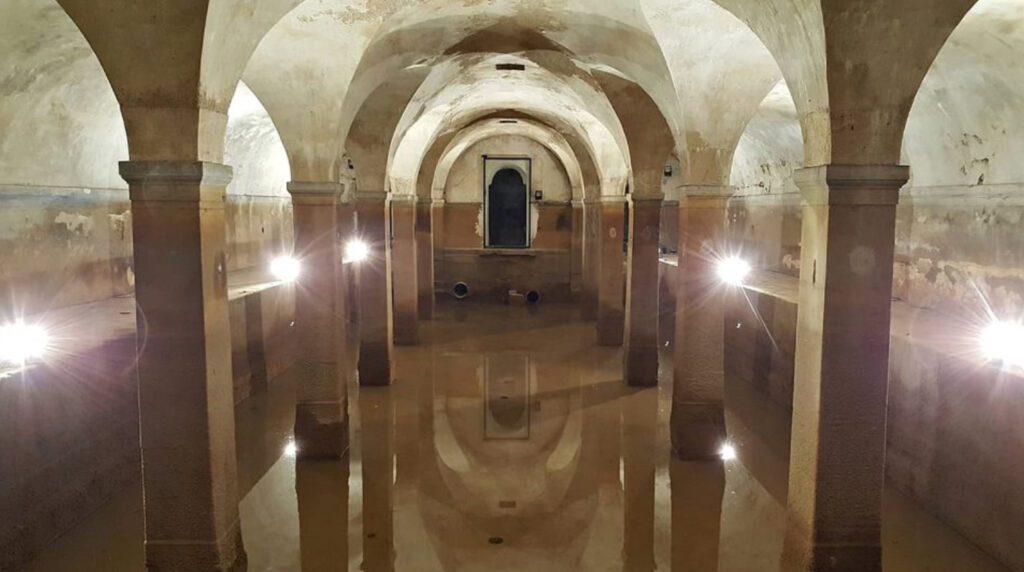
Roman aqueducts were marvels of engineering, combining careful site selection, precise surveying, durable materials, and efficient construction techniques. Several key factors contributed to their longevity, enabling many of them to survive—often in usable form—for millennia.
1. Careful Surveying and Gradients:
Before any construction began, Roman surveyors (using tools like the chorobates, a specialized leveling instrument) meticulously determined the best routes and gradients. Aqueducts typically maintained a gentle, consistent slope—often just a few inches per hundred feet—ensuring that water flowed steadily using gravity alone. This controlled gradient prevented excessive stress on the channels and minimized the risk of structural failures. By balancing the slope so carefully, the Romans reduced erosion, prevented stagnation, and avoided abrupt changes that could have weakened the structure over time.
2. Robust Construction Materials (Concrete and Stone):
A defining hallmark of Roman construction was their use of concrete made from a mixture of lime, water, and volcanic ash (pozzolana). This blend created a strong, chemical bond that set underwater and produced a highly durable material resistant to cracks and weathering. In some cases, especially for foundations and underground channels, Roman concrete actually hardened over time as it reacted with minerals in the environment.
In addition to concrete, Romans employed high-quality stones—often locally sourced—to build load-bearing sections, arches, and channels. Stones were precisely cut and fitted, with mortar acting as a bonding agent. The combined use of stone and concrete created aqueducts that could withstand not only the test of time but also natural disasters, ground shifts, and daily wear.
3. Ingenious Structural Designs (Arches, Vaults, and Underground Tunnels):
Roman engineers favored architectural forms like arches, vaults, and tunnels that effectively distributed weight and minimized tensile stress. The arch, in particular, was key to constructing aqueducts that could span valleys and traverse uneven terrain while remaining stable. By transferring the weight of the structure downward into the supports, arches prevented collapse and reduced the need for massive solid walls.
Where possible, the Romans built aqueducts underground in carefully excavated tunnels. Underground channels were protected from weather, temperature fluctuations, erosion, and direct sunlight, all of which could degrade materials more quickly. Enclosed environments shielded the channels from invasive plant roots or structural weaknesses caused by external factors, further extending their lifespan.
4. Protective Linings and Waterproofing:
Inside the channels, Romans often lined the conduit with waterproof plaster or a thin layer of hydraulic concrete, ensuring the water flowed smoothly and did not soak into surrounding materials. This practice also reduced the buildup of mineral deposits that could clog or damage the channel over time. By keeping the water contained and preventing leaks, the aqueduct’s structural elements remained dryer and more stable, increasing the system’s durability.
5. Modular, Incremental Construction and Maintenance Infrastructure:
Romans built aqueducts in segments and utilized standardized construction techniques. This modularity allowed for relatively straightforward maintenance. Access points, inspection shafts, and settling tanks (castella) were strategically placed so that sediment could be removed and repairs undertaken without dismantling large sections of the structure. Regular upkeep, combined with stable construction, meant small issues could be addressed before they compromised the entire system. Over centuries, periodic repairs and modifications helped the aqueducts remain sound.
6. Adaptation to Local Geography and Materials:
No two aqueducts were identical. Roman engineers tailored designs to local landscapes, foundation conditions, and available building materials. By using what was abundant and durable in each region—be it tufa stone, basalt, or high-quality pozzolanic ash—they ensured the aqueduct could better withstand local environmental challenges such as earthquakes, floods, and freeze-thaw cycles.
7. Long-Term Vision in Engineering Philosophy:
Roman engineering was guided by a culture of building for the ages. The aqueducts were state-sponsored infrastructure projects meant to supply cities and regions reliably for generations. This long-term approach meant careful planning, investment in top-quality materials and engineering talent, and the establishment of legal frameworks to protect water sources. Such foresight ensured aqueducts were robust enough to endure shifting political power, population changes, and the erosion of time.
In essence:
Roman aqueducts lasted thousands of years because they were the product of exceptional surveying, stable gradients, high-quality and long-lasting materials (especially concrete with volcanic ash), structurally efficient forms (arches and tunnels), careful waterproofing, and a philosophy of periodic maintenance. All these factors combined to create water conveyance systems whose durability and resilience remain benchmarks for civil engineering even today.
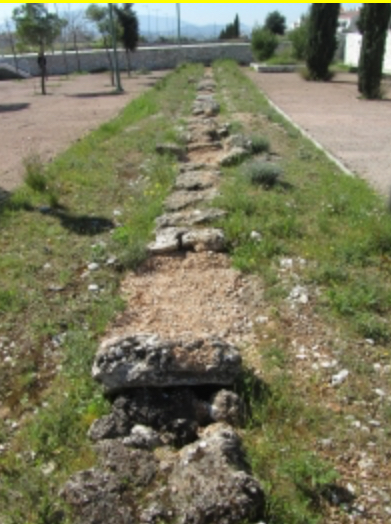
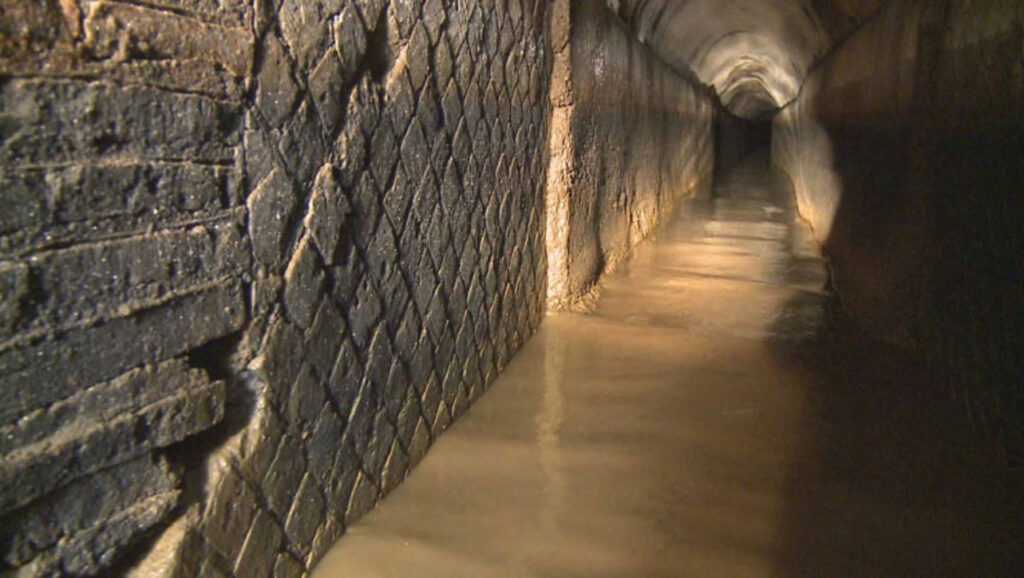
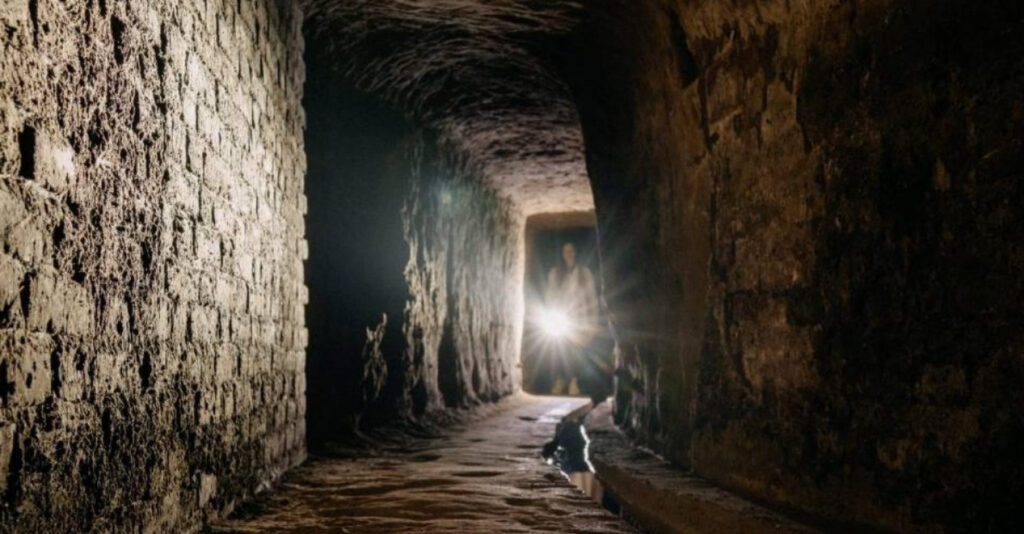
It’s challenging to produce an exhaustive catalog of all Roman aqueducts that still have surviving underground sections, as many remain partially buried, fragmentary, or archaeologically inaccessible. Nonetheless, several famous and well-studied examples are known to retain substantial subterranean stretches that can still be traced today. These include:
1. Aqua Appia (Rome, Italy)
• Date and Background: Constructed in 312 BCE, the Aqua Appia was the very first aqueduct built by the Romans.
• Underground Features: Unlike the later monumental arched aqueducts, the Aqua Appia ran almost entirely underground for its roughly 16-kilometer route, minimizing exposure to enemy sabotage and environmental damage.
• Present Condition: While not in active use, certain sections have been identified under modern Rome, and archaeological investigations have uncovered segments of its subterranean channel.
2. Aqua Virgo (Rome, Italy)
• Date and Background: Built in 19 BCE under the aegis of Marcus Agrippa, the Aqua Virgo transported water from springs about 20 kilometers east of Rome.
• Underground Features: Most of its course lay underground, with only a short portion crossing aboveground near the city’s perimeter.
• Present Condition: Remarkably, Aqua Virgo still supplies water to Rome’s Trevi Fountain. Although modern interventions have altered aspects of the system, much of its original subterranean route remains functional and integral to Rome’s water supply.
3. Hadrian’s Aqueduct (Athens, Greece)
• Date and Background: Commissioned by the Roman Emperor Hadrian in the 2nd century CE, it served the city of Athens after Greece became part of the Roman Empire.
• Underground Features: This aqueduct is approximately 20 kilometers (15 miles) long and runs mostly beneath the ground, using tunnels and covered conduits to carry water into the city center.
• Present Condition: After centuries of neglect, the underground route still essentially works. It is currently being partially revived to supplement Athens’s modern water supply, making it one of Europe’s longest functional underground Roman-era aqueducts.
4. Aqua Traiana (Lazio Region, Italy)
• Date and Background: Completed in 109 CE under Emperor Trajan, the Aqua Traiana brought water from springs near Lake Bracciano into the city of Rome.
• Underground Features: Much of its channel traversed a combination of underground conduits and tunnels to maintain a consistent gradient and protect the water from contamination.
• Present Condition: Portions of the aqueduct have been studied archaeologically; some segments are still accessible, and its route is well-documented by historians and engineers.
5. Gier Aqueduct (Lyon, France)
• Date and Background: Constructed in the 1st century CE to supply ancient Lugdunum (modern Lyon), the Gier Aqueduct is one of several that served this important Roman city.
• Underground Features: Though it includes impressive aboveground arcades, significant stretches of it run underground, through tunnels bored into hills and bedrock.
• Present Condition: Numerous remains, including subterranean sections, are still visible and have been the subject of preservation and interpretation efforts.
Additional Notes:
• Many Roman aqueducts were deliberately constructed with long underground portions to keep the water supply secure, stable in temperature, and safe from direct environmental degradation.
• In some cases, only fragments of these systems survive. Underground stretches are often better preserved because they were shielded from weather and human redevelopment.
• Beyond the well-known examples in Rome, Athens, and Lyon, there are numerous lesser-known or partially explored Roman underground aqueduct remnants scattered throughout the former Empire, including in parts of Italy, France, Spain, Portugal, North Africa, and the Middle East. Over time, archaeological excavations and modern infrastructure projects continue to reveal or rediscover these hidden marvels of Roman engineering.
